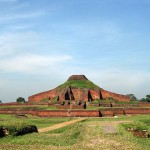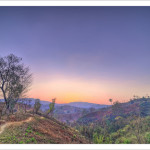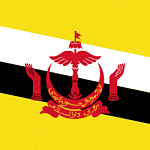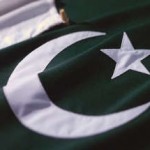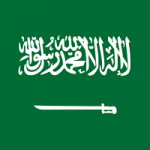Bangladesh maybe getting international attention for less-than-desirable reasons, but those in the know, know better that Bangladesh is an up and coming star in the outsourcing industry. With young population sufficiently educated to meet the needs of developed countries and eager for opportunities that are scarce in their homeland, Bangladesh will soon develop serious clout in the outsourcing, particularly IT, industry and make it a hub of upstart ventures looking for something fresh in the Asian scene.
Below is the calendar for Bangladesh public holidays 2013, with a handful holidays (Islamic) dependent on the sighting of the new moon.
Eid Milad un-Nabi – Friday, 25 January 2013
The birth and death anniversary of the Prophet Muhammad is one of the most important religious festivals in Bangladesh. To commemorate this major Islamic event, thousands participate in “Jasne Julush” processions reciting prayers for forgiveness of transgressions and special favors. Vehicles that take part in the massive processions are festooned with green and red Bengali flags and Islamic banners with elaborate Quran scripts. “Doa Mahfil” masses are also offered in special places and mosques around the country, seeking auspicious blessings for everyone.
Shahid Dibash Day – Thursday, 21 February 2013
On this day in 1952, protesters who wanted to make Bangla or Bengali (instead of Urdu which was spoken only by the elite minority) the official language of the country were killed. Out of this movement came forth other struggles that led to the war for independence from Pakistan. Also known as the Language Martyr’s Day, this day is commemorated with a mourning service that culminates in the Shahid Minar (martyr’s monument) where a more formal wreath-laying ceremony takes place later in the day. The green and red Bangladeshi flag is lowered to half-mast and schools honor the martyr’s struggles by holding essay writing competitions in Bangla.
Bangabandhu (Father of the Nation Birthday) – Sunday, 17 March 2013
Born on this day in 1920 to a middle class family, Sheikh Mujibur Rahman was considered the Father of Bengali independence (from Pakistan). To commemorate his leadership against Pakistani rule, Bengalis hold special programs and competitions for children in an effort to educate them about the sacrifices of the Father of the Nation. Open discussions and poetry recitations are held all throughout the country to celebrate the life and works of “Bangabandhu,” (friend of the Bengal) while cultural presentations and street rallies remind every citizen of the sacrifices he made. More formal wreath-laying ceremonies in front of his statues are attended by key government officials.
Shadhinota Dibôsh – Tuesday, 26 March 2013
On this day in 1971, the struggle for independence from Pakistan began. To celebrate National Day, civic parades are held, with heaviest participation at the National Martyrs’ Memorial near Dhaka, the country’s capital. The fallen men and women who took part in the struggle for liberation are honored with a 31-gun salute at dawn. Bangladeshi flags decorate the main thoroughfares in the capital, and fairs and concerts are also performed in or around this marker to make the mood more festive.
Poila Baisakh (Bengali New Year’s Day) – Sunday, 14 April 2013
Locally known as “Naba Barsho,” the Bengali New Year is similar in concept to Western spring festivals. This day marks the start of the crop season in the Bengali calendar. On this day, Bengalis clean up their houses, wear new “sarees” (traditional garments), wear gems, exchange sweets, gifts and greeting cards, seek blessings from their elders, and participate in daybreak cultural, dance and musical celebrations that extend well into the day.
Labor Day – Wednesday, 1 May 2013
As a country with eager young workers, Bangladesh honors the social and economic contributions of its labor force to nation-building.
Boishakhi Purnima – Thursday, 23 May 2013
On this day, the birth, enlightenment and death of Buddha is commemorated. Also called Wesak or Buddha Purnima, Buddhist Bengalis, particularly the “Bhikkus” or monks, celebrate this day with a procession, cultural programs, prayers and open discussions. To celebrate the natal day of Buddhism’s founder, the devout in Bangladesh light candles and incense and put out offerings before the statues of Buddha in various temples throughout the country, the busiest of which is in Chittagong Hill Tracts and Cox’s Bazar where the largest concentrations of followers can be found. Buddhist orders also perform a ritual of watering bodhi trees that were saplings from the original tree under which Buddha achieved enlightenment.
Shab-e-Barat – Tuesday, 25 June 2013
On this day, Allah is said to arrange the affairs of His creations for the next year, writing their destinies while taking into account His creations’ past deeds. Bengalis take this time of the year to forgive others and seek forgiveness of their own transgressions, reflect on the Qur’an and visit the graveyards of their departed. This is also the most auspicious day to ask Allah for favors, so devout Muslims offer special prayers at night for better things in life.
Jamat-ul-Bida – Friday, 2 August 2013
The Friday of Farewell, also known as Jumu’ah-tul-Wida, happens on the last Friday of the fasting month of Ramadan before the occurrence of Eid-ul-Fitr. Devout Muslims dedicate this day in solemn prayer and submissive worship, in a prayer ritual called “ibadah.”
Shab-e-Qadar – Tuesday, 6 August 2013
It was said that on this day, the first verses of the Quran were revealed to Muhammad. To celebrate the birth of Islam, Muslims offer special prayers and perform “Quran Khawani” and “milad” rituals (reciting verses from Quran) in mosques all throughout the country. Families also visit the graveyards to seek blessings from their departed.
Eid-ul-Fitr – Thursday to Saturday, 8 to 10 August 2013
After a month-long abstinence from food, drinks and intimate relations during daylight hours, the Festival of the Breaking of the Fast is celebrated in Bangladesh for three days. Several “jamaat” (Eid assemblies for prayer) are scheduled throughout the day, when people congregate in mosques and religious halls for worship, the busiest of which is in Baitul Mukarram mosque in Dhaka. “Zakat” and “fitra” are done on this occasion, a form of alms-giving or monetary donation that goes to specific groups of people. Hand-painting using henna, wearing of new clothes, visiting relatives and friends, sharing traditional meals are popular traditions performed during this Eid. This is also the day when young people touch the feet of their elders to seek and receive blessings.
National Mourning Day – Thursday, 15 Augut 2013
On this day in 1975, the Father of the Nation and first president of Bangladesh Sheikh Mujibur was assassinated by a group of junior military officers. Because of his nationalist agenda for a sovereign Bengali state (which was then known as East Pakistan), Sheikh Mujibur and his family were assassinated in a coup, killing 19 other members of his family and personal staff. To commemorate this grim event and remind citizens of the price paid to achieve their independence, Bangladeshis hoist their flags at half mast and offer giant wreaths before the grave of Sheikh Mujibur at Tungipara in Gopalganj.
Janmastami – Wednesday, 28 August 2013
Bangladesh is on the northern portion of the Indian continent, so Hinduism is as much part of the Bengalis as it is of the Indians. On this day, Hindu Bengalis celebrate the birth of Krishna, one of the eight avatars or incarnations of Vishnu. The devout celebrate this day by fasting and offering prayers until midnight when Krishna was said to be born.
Bijaya Dashami – Monday, 14 October 2013
Outside of India, Bangladesh follows next to Nepal in terms of Hindu population. Durga Puja is a celebration of the Hindu goddess Durga who is considered the mother of the universe and a demon-slaying symbol of female dynamism. In Bangladesh, the mother goddess Durga is worshipped by millions of devotees on this day in thousands of “pandals” (makeshift structures for the veneration of the goddess) or “puja mandapa” (temples of worship). Daughters come home to their fathers’ households to celebrate. Concerts, musical events and plays depicting the life of the goddess are held in places around “pandals”. The last day of the five-day long Durga Puja in Bangladesh is Bijaya Dashami.
Eid ul-Azha – Tuesday to Thursday, 15 to 17 October 2013
This day commemorates the readiness of Abraham to sacrifice his son Ishmael. Wealthy Bengalis perform a sacrificial ritual called “Qurbani” on the first day of the Eid when goats or cows are slaughtered and their meat distributed to the poor. The capital, Dhaka, is often deserted on the Eid days as people go back to their ancestral villages to celebrate Islam’s second largest festival after Eid-ul-Fitr. Millions and millions of livestock are slaughtered for “Qurbani” so streets are literally painted in blood red.
Ashura – Thursday, 14 November 2013
On the 10th day of Muharram, the first month of Islamic calendar, Shiite Muslims commemorates the death of Imam Hussein, the grandson of Prophet Muhammad. Hundreds of thousands of devoted followers take to the streets and carry banners containing verses from Islamic scripts, chanting slogans that reflect their faith. Walking on live charcoal and self-flagellation are the most prominent features of this event.
Bijoy Dibosh – Monday, 16 December 2013
On this day in 1971, Bangladesh gained independence from Pakistan after a nine-month struggle which started on March 26. Victory day is ushered with a 31-gun salute and formally celebrated by a parade of troops and wreath-laying ceremonies at the National Memorial Monument.
Christmas Day – Wednesday, 25 December 2013
The birth of the Christian savior is also celebrated on this day with homemade decorations and “Bara Din” (Big Day) masses. “Pithas” or traditional Bengali cakes are popular on this day in Christian households.
Explore the rest of the world
More from my site
Article by Chris
Chris had a passion to contribute to society especially to fellow travelers like himself. He also had a passion for Southeast Asia and frequently visited. While brainstorming ideas, he decided that a travel blog dedicated to his favorite countries, Thailand and Singapore, could be more beneficial than any guidebook. Only one year later did the blog’s success bring in more writers, more countries, and more readers.
- Google+ |
- More Posts (327)
Help others get the information they need by liking or sharing our page!
Follow @followloveblab
 The Oriental Allure: Captivating and Mysterious
The Oriental Allure: Captivating and Mysterious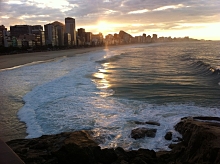 Enjoy one of the world’s most famous beaches
Enjoy one of the world’s most famous beaches